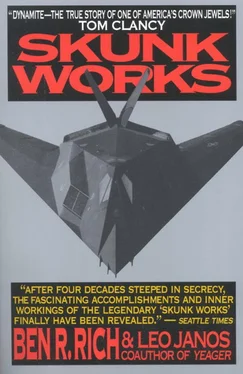It was during the mid-1960s that the Blackbird, the SR-71, as the successor to the U-2 began bringing us intelligence information both photographic and electronic. During my watch as Secretary of Defense, we relied on overflights of Cuba by Blackbirds to obtain vital national security information involving the Soviets. These flights enabled us to determine that the Russians were indeed shipping in their latest attack fighters in violation of their 1962 pledge not to deploy offensive weapons in Cuba. Armed with photographic proof, we obtained Soviet assurances that these aircraft were for defensive purposes only. Another overflight in 1979 revealed Soviet troops and armor deployed in Cuba. Caught by our cameras, the Russians claimed they were merely staging maneuvers with their Cuban allies. To counter this, we staged our own training exercise in the vicinity that dwarfed theirs in both size and strength. So in its ability to be dispatched quickly anywhere in the world, the Blackbird proved to be invaluable.
Finally there is the F-117 stealth fighter, which began in development stages during my last years in office. It was a remarkable achievement and excited the imagination of operational planners who finally had the good sense to come up with a workable doctrine and operational concept, combining the airplane’s invulnerability with high-precision bombs. The airplane’s success in Desert Storm was unprecedented and overwhelming, justifying all our early enthusiasm about the new technology and my decision to pin a medal on Ben Rich’s chest during my last days in office.
Caspar Weinberger
(Secretary of Defense from 1981 to 1986)
Airplanes produced by the Skunk Works made enormous contributions to our winning the cold war, and the whole idea of putting money into such a splendid R & D operation for extremely advanced aircraft must continue to be a vital part of our national defense into the next century. So I have very strong views about the Skunk Works. In fact, one of the concerns I have about the current administration is the cuts in R & D funding, because our great strength is the variety and degree of sophisticated weapons that enabled us to do the kinds of things we achieved in the Gulf War. You don’t get those kinds of systems the morning after the war starts: you have to spend seven years in development, as we did with the stealth fighter, which performed so flawlessly and with such devastating effect.
The Soviets had great trepidations about that stealth fighter. It was one of three key items on their counter-strategy agenda: the first was NATO and their efforts to decouple us from Europe and see us pull out; the second was to do all in their power to stop work on the Star Wars defense initiative, and the third was to uncover our secrets about stealth. They knew we were working on it because Mr. Carter announced it a few months before the 1980 election in order to pick up some votes. From there on in, their espionage and spy satellite activities directed against the Skunk Works increased tenfold. They were panicked because there was no way they could counter this technology. Just like the Blackbird, that was so far ahead of its time that to this day it could still outperform anything else around, the F-117 was an attack system the other side simply could not find a way to stop. It was designed for surgical strikes against heavily defended targets—get in and out very quickly and not be vulnerable.
I had a stubborn determination to keep that airplane under wraps for as long as possible. I didn’t want to use it prematurely, as in our strike against Kaddafi, because I didn’t want to risk having a plane go down and having its technology explored. Our military advantage has always been the variety and degree of the sophisticated weapons systems we have been able to produce—systems far ahead of the other side’s capabilities. On this score, the Skunk Works is without peer in the world—the airplanes they produced were decades ahead of then current capabilities. To this day, no airplane can begin to outperform their incredible Blackbird. And as for the F-117A stealth fighter, not one of them suffered a single bullethole despite undertaking hundreds of tough combat missions in the Gulf War. This was a very intense conflict, and I was frankly surprised by its tremendous performance, because it was not precisely the kind of mission that the stealth fighter had been designed for.
The stealth program was a classic example of an R & D triumph of historic proportions. We could use the stealth fighter to take out the other side’s most effective and dangerous missile sites in a series of quick surgical attacks, leaving them defenseless against our main force of attack aircraft. Stealth changed all the dimensions and equations for planning future air campaigns.
The Skunk Works has been extraordinarily impressive over the years and absolutely vital to the national interest. Every administration since Eisenhower’s has counted on them to help keep us in the technological forefront in a dangerous world. So it is against this background that I view with alarm the problem of downsizing our defense industry to the point where the Skunk Works will lose valuable workers and be allowed to dangerously atrophy. The cold war may be over, but the world is certainly not benign. More than ever, it seems to me, we need to continue developing new generations of surveillance aircraft to replace the Blackbirds and U-2s—airplanes that are the hallmarks of the Skunk Works’ genius—to attempt to deal with regional conflicts, or to find out whether anxiety-causing military maneuvers in some trouble spot are not actually a prelude to a full-scale military engagement, or just to keep a sharp eye on what North Korea is really up to. And we can’t do this vital job effectively just with overhead satellites. We need spy planes—whether manned or ground-controlled drones.
But I am frankly concerned that Lockheed and other companies are looking to new civilian areas because there is no future in defense. General Dynamics is already out of the military aircraft business, and we might be down to two or three main contractors. That means we will have an incredibly hard time trying to hold on to our best and most skilled aerospace engineers and shop workers. Clearly we need a president with the political courage to continue fielding a strong defense and fund it, instead of drastically cutting back and then using the savings for politically popular programs. The Skunk Works has kept us preeminent, and we have got to keep them preeminent.
William J. Perry
(Secretary of Defense for President Clinton)
The Skunk Works enjoys a preeminence in aerospace development based largely on unbounded enthusiasm and a willingness to tackle just about anything. That was amply demonstrated to me back in the 1970s, during my first tour of duty at the Pentagon as undersecretary, while working with Ben and the Skunk Works to develop the stealth fighter. Those guys showed the most extraordinary confidence in their willingness to take on projects that most other companies would avoid because the chances to succeed were too small or too difficult. But the Skunk Works applied their formidable technical skills in very practical ways that no other company was able to match. That, plus their tremendous energy and willingness to work around the clock until a problem was solved, enabled them to enjoy a very close and trusting relationship with the customer that was unique between government and industry.
Without question, my work with the Skunk Works on developing the stealth fighter is the most significant project I have ever been involved in. Back in the seventies, I never would have been able to predict in detail about where we would be in stealth developments in the 1990s. But I did have a vision that what the Skunk Works had produced was the most important military aerospace technology since the invention of radar in World War II. And like radar, stealth would change the way that all subsequent air wars would be fought. I believed then that it was only a matter of time before every new airplane and missile that we built would incorporate stealth features and that stealth would provide our Air Force with a highly leveraged capability to wage air wars. All of that was very clear to me twenty-two years ago, and I can remember the precise moment when I became certain about the real significance of our stealth work—a specific summer day in 1977, when the Have Blue stealth prototype built by the Skunk Works first flew over a radar-measurement test range. The results were just stunning. Have Blue proved that the incredible low radar cross section previously achieved by a wooden model sitting on top of a pole could be duplicated by a combat aircraft.
Читать дальше












